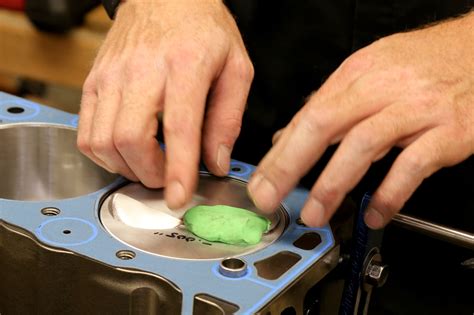Piston to Valve Clearance: A Simple Check for Optimal Performance
Maintaining the correct piston-to-valve clearance is crucial for the optimal performance and longevity of your engine. This seemingly small gap determines whether your pistons and valves will collide, leading to catastrophic engine failure. Understanding this clearance and how to check it is essential for any car enthusiast or mechanic. This article will delve into the importance of piston-to-valve clearance, explain how to check it, and discuss the implications of incorrect clearances.
What is Piston-to-Valve Clearance?
Piston-to-valve clearance, also known as valve-to-piston clearance (VPC), refers to the minimum distance between the top of the piston and the bottom of the intake or exhaust valves when the piston is at its highest point (Top Dead Center or TDC) and the valves are fully open. This space is vital to prevent the piston from striking the valves, causing severe damage. The clearance is usually measured in millimeters (mm) or thousandths of an inch.
Why is Checking Piston to Valve Clearance Important?
Incorrect piston-to-valve clearance can have significant consequences:
- Engine Damage: The most severe outcome is piston-to-valve contact. This leads to bent valves, damaged pistons, and potentially a destroyed cylinder head, requiring costly repairs.
- Reduced Performance: Insufficient clearance can restrict valve lift, reducing engine power and efficiency. The engine may run poorly, lack power, or misfire.
- Premature Wear: Excessive clearance can also lead to premature wear on components due to increased stresses and vibrations.
How to Check Piston to Valve Clearance?
Checking piston-to-valve clearance requires careful and methodical work and is often best left to experienced mechanics. It's a process that needs specialized tools and a good understanding of engine mechanics. However, here's a general overview of the process:
-
Engine Preparation: The engine needs to be completely disassembled to access the pistons and valves. This typically involves removing the cylinder head, and sometimes the crankshaft.
-
Measuring Tools: You'll need precision measuring tools such as a dial indicator, feeler gauges, and a piston stop to accurately measure the clearance.
-
Setting the Piston to TDC: Using a degree wheel or timing marks, the piston needs to be precisely positioned at Top Dead Center (TDC). This is crucial for an accurate reading.
-
Valve Actuation: The valves are carefully actuated to their fully open position, either manually or using specialized tools.
-
Measuring the Clearance: With the piston at TDC and the valves fully open, the clearance is measured using a dial indicator or feeler gauges, depending on the specific method and engine design.
-
Comparing to Specifications: The measured clearance is then compared to the manufacturer's specifications for your particular engine. This information is usually found in a workshop manual or online resources.
Note: This is a simplified overview. The exact procedure will vary significantly based on engine type, design, and manufacturer. Improperly checking this clearance can lead to inaccurate readings and potentially damage your engine.
What if the Piston to Valve Clearance is Incorrect?
If the measured clearance is outside the manufacturer's specifications, adjustments may be needed. This could involve:
- Shim Adjustment: Some engines use shims to adjust valve clearance. Replacing shims with different thicknesses can correct the clearance.
- Machining: In more extreme cases, machining the piston crown or valve stems may be necessary. This is a specialized task requiring skilled machining expertise.
Frequently Asked Questions (FAQs)
What happens if the piston hits a valve?
If the piston hits a valve, it will likely bend or break the valve, damage the piston, and possibly cause serious damage to the cylinder head and other engine components. This usually results in a complete engine overhaul or replacement.
Can I check piston to valve clearance myself?
While it's possible for experienced mechanics to check this clearance, it's generally not recommended for DIY enthusiasts unless you have extensive engine rebuilding experience. The process requires specialized tools and a thorough understanding of engine mechanics. Incorrect measurement can lead to further damage.
How often should I check piston-to-valve clearance?
Piston-to-valve clearance is typically checked during major engine overhauls or rebuilds. It's not a routine maintenance item.
What causes incorrect piston to valve clearance?
Incorrect clearance can result from several factors, including wear on valve components, improper installation of components, modifications to the engine (such as performance cams), or manufacturing defects.
This comprehensive guide highlights the importance of piston-to-valve clearance. Remember, accuracy is paramount when working with engine components. If you are unsure about any aspect of this procedure, always consult a qualified mechanic. The cost of a professional inspection and repair is far less than the cost of a catastrophic engine failure.

